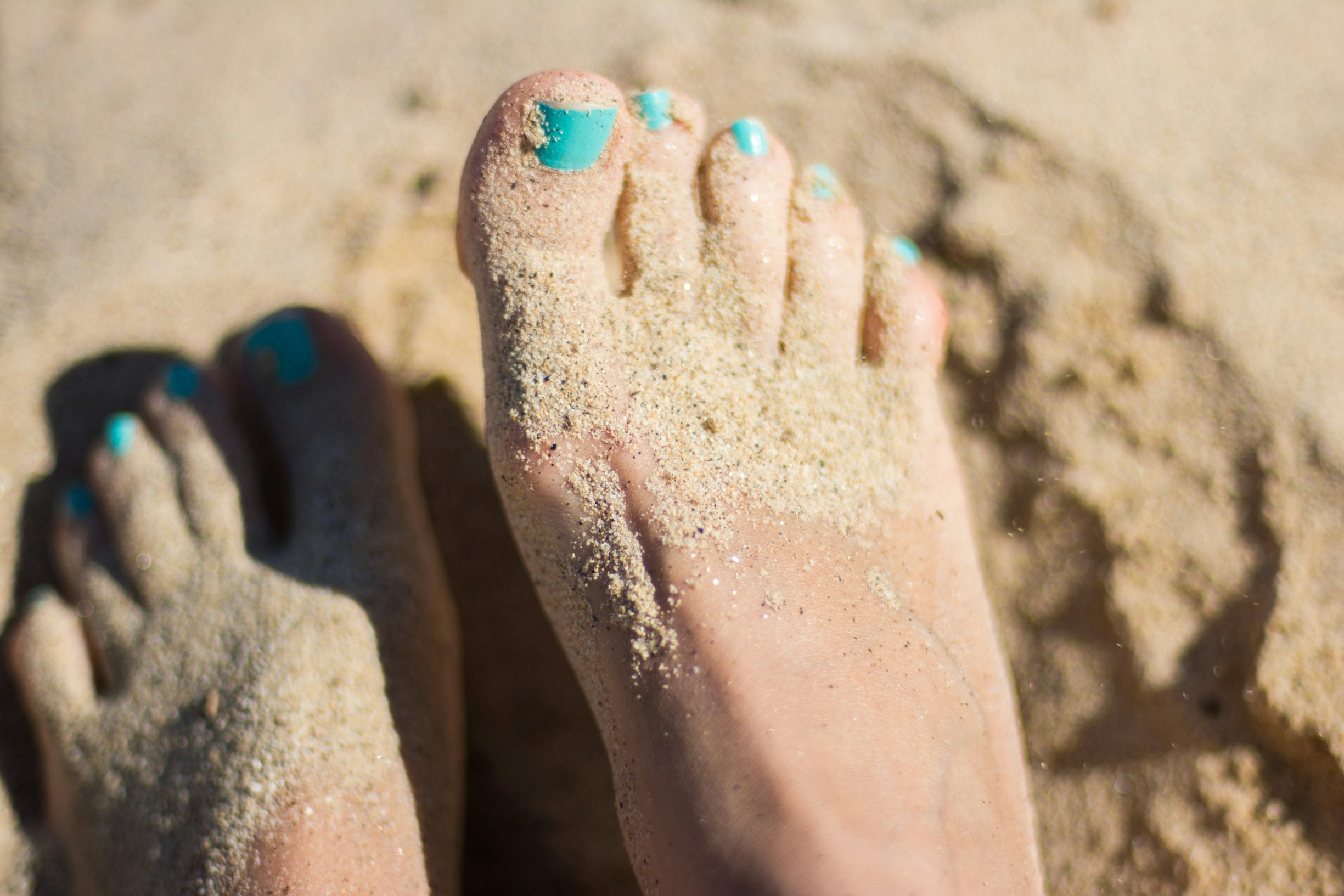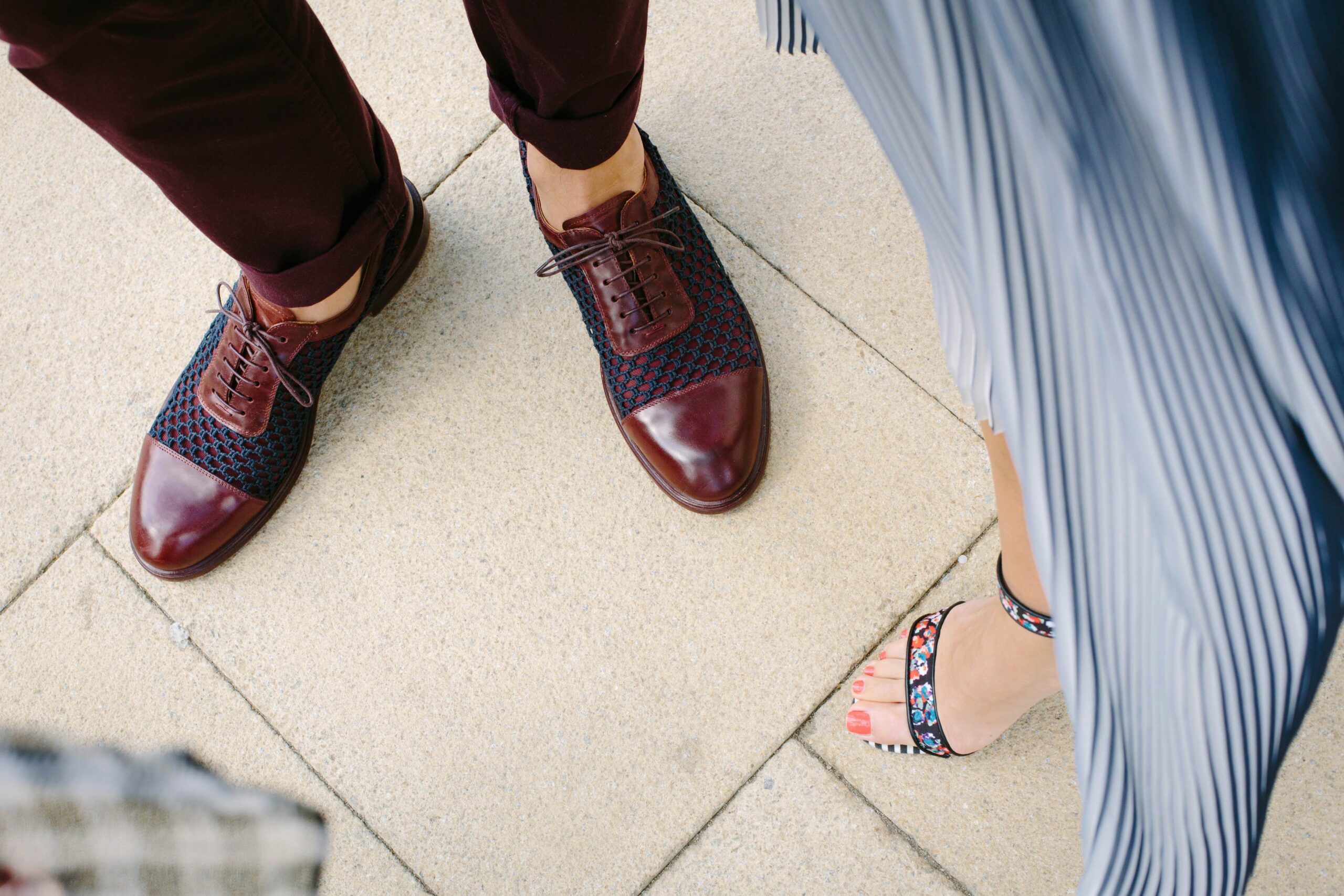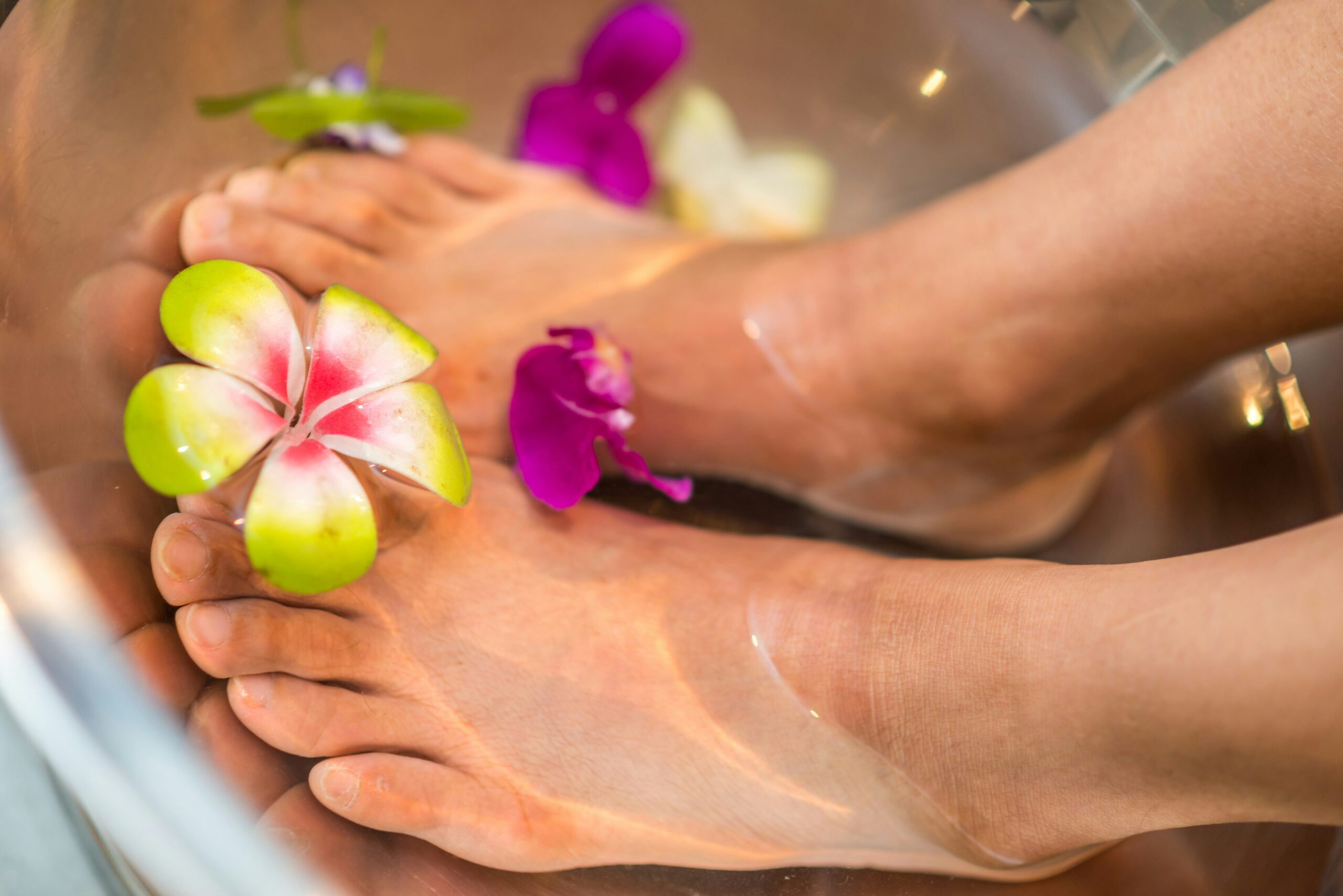An ingrown toenail that develops into the skin, which specialists call onychocryptosis, happens when the edge or corner of the toenail punctures into the delicate portion around it. This issue is generally seen within the huge toe but can also happen to other toes. It frequently causes torment, redness, swelling, and sometimes contamination of the encompassing skin.
Distinctive reasons exist for toenails that begin developing into the skin. It can happen when somebody cuts their nails briefly or doesn't clip them straight over. Shoes that are too little or don't fit right, pressing the toes, can make this issue more genuine. On the off chance that the nail of the toe is harmed, in case other family individuals have had comparative issues, or if the toenails bend by themselves, these things can all make it more conceivable for an individual to induce an ingrown toenail.
Signs of an ingrown toenail shift from slight inconvenience to solid torment. The skin close to the vexed nail may be red and inflamed. Sometimes, when the disease is there, you'll see discharge. If no treatment is given, the contamination might develop and cause greater issues like abscesses or cellulitis.
It would help if you took great care of your feet to avoid toenails from developing into your skin. Cutting the nails straight over rather than adjusting them at the edges is superior. Guaranteeing the shoes are comfortable and sufficient space for your toes is also advantageous. For an individual who regularly gets ingrown toenails, observing their feet frequently and taking great care of them is critical.

Numerous individuals encounter ingrown toenails, and it happens frequently. Inquire about demonstrates that around one in five people![]() who see a specialist for foot issues have this issue with their nails. This circumstance can happen anytime, but it frequently happens with youngsters and individuals fair beginning their twenties.
who see a specialist for foot issues have this issue with their nails. This circumstance can happen anytime, but it frequently happens with youngsters and individuals fair beginning their twenties.
Individuals who frequently do activities that put a part of the weight on their feet, like competitors or expressive dance artists, or who more often than not wear tight shoes or tall heels, are more likely to urge toenails that grow into the skin. The expanded push and nonstop hurt to the toes cause this issue.
Hereditary qualities contribute to the chance of getting ingrown toenails as well. A few people have the next chance because of their characteristic toenail shape or how their toes are shaped. If somebody in your family had problems with toenails growing into the skin before, you will be more likely to have this problem, too.
Youthful individuals and youngsters regularly get ingrown toenails since their feet develop rapidly. But grown-ups can have this issue, as well, as they get more seasoned. Their toenails may grow into their skin if they don't care for their feet, and nails regularly get thicker with age.
Specialists refer to ingrown toenails as onychocryptosis, which, as a rule, happens when nails are not cut appropriately.
Trimming your toenails too short or adjusting them rather than cutting them straight can cause the nail to develop into the encompassing skin. This normal error can cause an ingrown toenail.
Shoes are moreover critical. When they are overly cozy or unfitting![]() , particularly those squeezing and much on the toes, they may cause toenails to create strangely. If the shoes you wear are limited close to where your toes are or if they have tall heels, your toes might get squeezed together as well. This will increase the chance for the nails on your feet to bend and go into the skin. As often as possible, wearing such shoes constrains and contacts your toes, leading to nails burrowing into the adjoining skin.
, particularly those squeezing and much on the toes, they may cause toenails to create strangely. If the shoes you wear are limited close to where your toes are or if they have tall heels, your toes might get squeezed together as well. This will increase the chance for the nails on your feet to bend and go into the skin. As often as possible, wearing such shoes constrains and contacts your toes, leading to nails burrowing into the adjoining skin.
The toenail can be damaged if it is struck, a heavy object falls on it, or other sorts of damage happens to the nail or the space beneath it. The damage might change the nail's development, conceivably causing a toenail to become ingrown into the tissue.
Hereditary qualities can impact the probability of encountering ingrown toenails, as some have nails that tend to bend more. When a family part routinely endures ingrown toenails, it may be due to genetic variables that increment their vulnerability to this condition.
Furthermore, repetitive exercises such as running, playing soccer, or practicing ballet can increase the chances of creating ingrown toenails. These steady developments put weight on the toes, which may result in nails developing into the skin.
In the event that you do not clean and make your feet dry beyond any doubt, the skin near the nails can become infected, which might also lead to toenails developing into the skin.

An ingrown toenail can cause much torment and distress. At first, there may be a slight delicacy or mellow torment along the side of your nail. This discomfort often increases once you press the toe or wear tight shoes that compress the painful zone.
When the condition becomes more genuine, the distress regularly increases. The skin close to the nail can become reddish and swollen. Once you touch it, it may feel warm, which suggests swelling. Standing or strolling for long periods can increase the torment and make daily exercises more difficult.
In exceptionally awful circumstances, the torment might throb and last long. When there's a disease, it's conceivable to see liquid or discharge assembled near the nail. Frequently, there's a repulsive odor. The toe can become exceptionally touchy; a light touch or slight weight causes noteworthy torment.
Sometimes, when the nail grows into the skin, it creates a sharp and solid torment because it cuts into the substance. The torment gets more regrettable if the nail enters deeper into the skin. Over time, the encompassing zone might too be gotten to be difficult or calloused.
An ingrown toenail might be excruciating and prevent you from wearing certain shoes. It may also require you to alter your strolling style to avoid putting pressure on the affected toe, which can lead to extra strain on other parts of your foot or leg.
To find out if an individual has an ingrown toenail, a doctor who is talented in treating feet or skin will examine the toe. They search for ruddy regions and swelling and test whether pressing near the nail causes torment. They may also check for any signs of disease, such as seepage or pus.
Sometimes, the therapeutic worker might press softly on your toe sides to check how much pain you feel and see if the nail is pushing into the skin around it. They could inquire about how much it hurts and whether you have recently had ingrown toenails or other troubles with your feet.
More tests may be required to form a conclusion in complicated or serious cases. For example, when there are side effects of an infection, the specialist may take a sample of the liquid to look at in a lab to discover which microscopic organisms are responsible for the disease. This may help direct suitable treatment.
Sometimes, when an ingrown toenail contaminates the skin, doctors might ask for X-ray pictures. They require these pictures to see how much the nail has gone into the skin and to check for issues with the bone underneath that may make this circumstance more regrettable.

The method of dealing with an ingrown toenail changes depending on its reality.
It may be adequate to use cures at domestic for a not-very-serious case. To reduce torment and swelling, put your sore foot in warm, soapy water a few times daily. Additionally, marginally raise the edge of the ingrown nail and embed a little piece of cotton or dental floss underneath; this may empower the nail to develop over your skin.
You may purchase torment relief medicines such as ibuprofen or acetaminophen at the drugstore to reduce inconvenience. Applying an antibacterial treatment to the affected zone might prevent infection from starting. In any case, if the indications persist or become more extreme despite following these measures, it is fundamental to allude to”>to refer to a doctor.
When the condition is severe or recurrent, a therapeutic proficient may be required to perform minor surgery![]() to expel the parcel of the nail that has penetrated the skin. This strategy regularly happens in a neighborhood anesthesia clinic and is known as partial nail avulsion. Amid this strategy, the healthcare worker will carefully expel or trim the segment of the nail that has entered into the skin and may apply a chemical to prevent it from regrowing if it is vital.
to expel the parcel of the nail that has penetrated the skin. This strategy regularly happens in a neighborhood anesthesia clinic and is known as partial nail avulsion. Amid this strategy, the healthcare worker will carefully expel or trim the segment of the nail that has entered into the skin and may apply a chemical to prevent it from regrowing if it is vital.
At times, evacuating the complete nail gets to be basic so that the fundamental tissue can recoup legitimately. This strategy, called total nail avulsion, is unprecedented, and doctors save it for extreme or repetitive ingrown toenails.
After the strategy, you must legitimately care for the wound to prevent contamination and permit healing. The therapeutic proficient will provide instructions on maintaining your toe's cleanliness and dryness, applying antibiotic ointment, and covering the affected zone as needed. You must pay attention to this information to mend quickly and reduce the possibility of issues.

The time you were required for an ingrown toenail to recuperate changes from individual to individual is affected by the seriousness of the condition and the chosen treatment strategy. If your condition isn't serious and you manage it at home by dousing your foot in warm water and delicately handling the nail, it may improve within a few days to one week. Painkillers you can purchase without a prescription may be useful for controlling pain while recouping.
When the situation is genuine and requires a doctor's attention, such as when they must take out a few or all of your nails, recovery may well be longer. After this method, your toe may take a few weeks to recuperate. Appropriate wound care is basic to avoid contamination and advance healing during this time.
Regularly, when an individual swiftly addresses an ingrown toenail, the result is most often great. It can frequently be managed utilizing straightforward techniques or minor operations. If it isn't taken care of, or if complications such as diseases happen, the forecast may be less favorable.
At times, indeed, when treated accurately, ingrown toenails may return. This may happen on the off chance that issues such as incorrect nail trimming or the utilization of excessively tight shoes continue. In these cases, it makes a difference to get regular foot care from a specialist and take preventive activities to lower the hazard of recurrence.
As a rule, the forecast is positive when individuals address ingrown toenails rapidly and appropriately. Addressing the causes and maintaining good foot cleanliness can anticipate repeat and maintain healthy feet.
To avoid toenails that grow into the skin, it is important to look after your feet properly and adopt a way of life that promotes well-being. A key activity in preventing this issue is to trim your toenails accurately. Trim your nails straight over and avoid curving the edges to prevent them from developing into the skin. Also, attempt not to cut them too short, as this could increase the chances of ingrown nails.
Choosing shoes that fit properly is essential to prevent the nails on your toes from digging into your skin. Opt for footwear that gives sufficient room for development, and avoid selecting those with limited or pointed tips that can compress your toes together. High heels are not great as they can press your toes, making the nails grow into the skin.
Proper foot care is vital for maintaining a strategic distance from issues. Guarantee you clean and dry your feet thoroughly![]() , especially around the nail range of the toes. Apply moisturizer frequently so your feet won't dry out and form cracks. If this happens, it might make openings for microscopic organisms, expanding the disease risk.
, especially around the nail range of the toes. Apply moisturizer frequently so your feet won't dry out and form cracks. If this happens, it might make openings for microscopic organisms, expanding the disease risk.
Regularly inspect your feet for any signs of ingrown toenails or other foot problems. If you notice any redness, swelling, or tenderness around the nails, promptly address the issue before it worsens.
For individuals prone to ingrown toenails due to genetic factors or other underlying conditions, seeking regular foot care from a podiatrist or healthcare provider can help prevent recurrences.